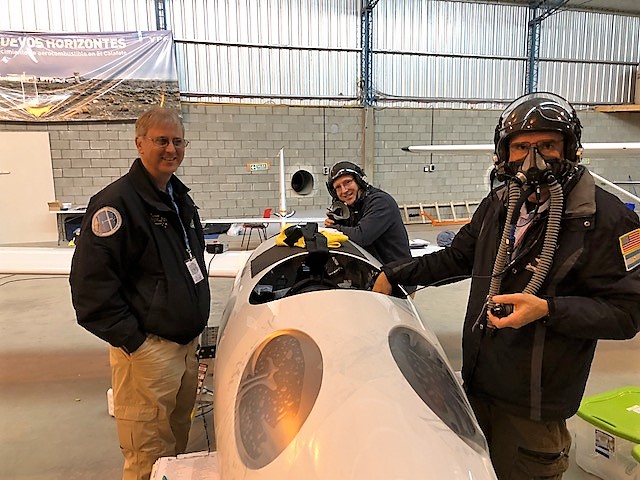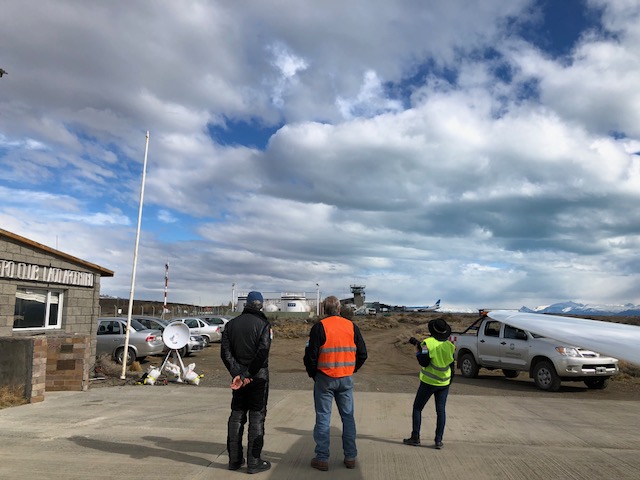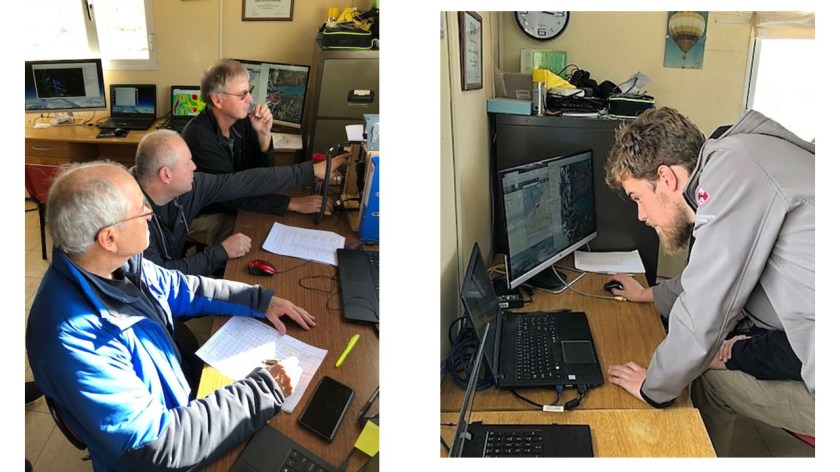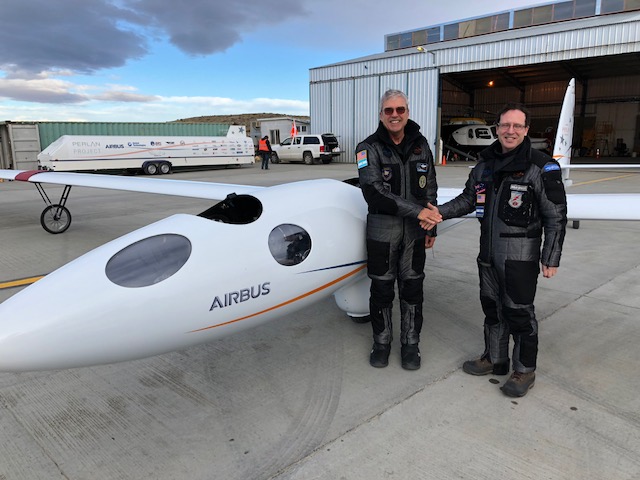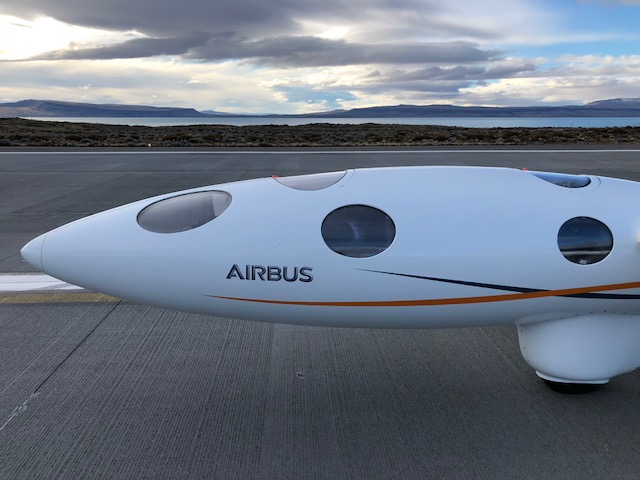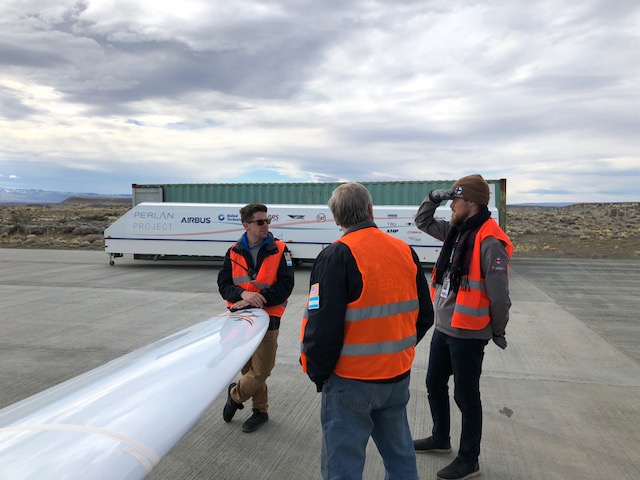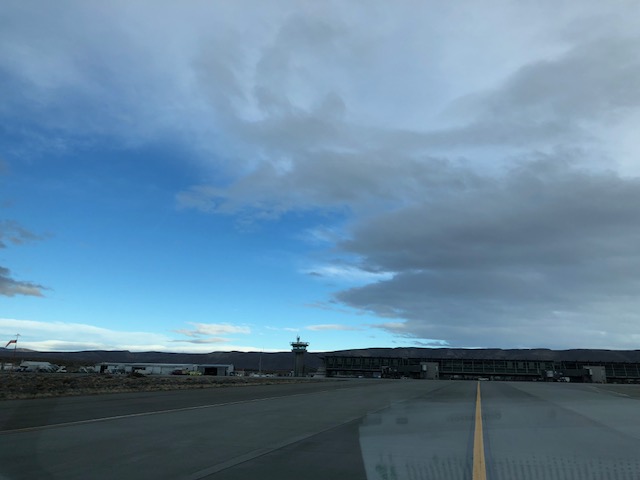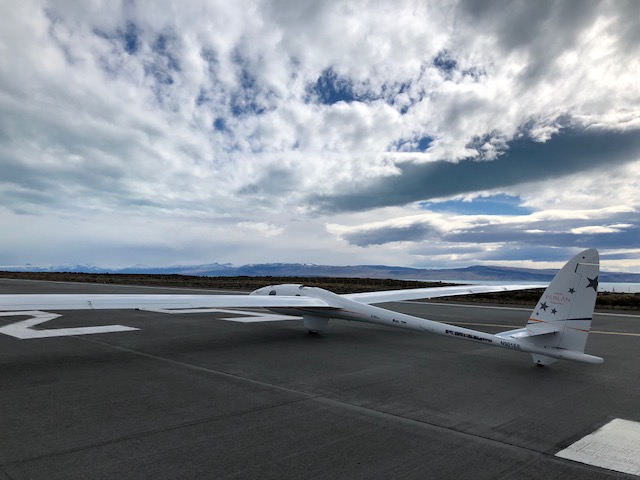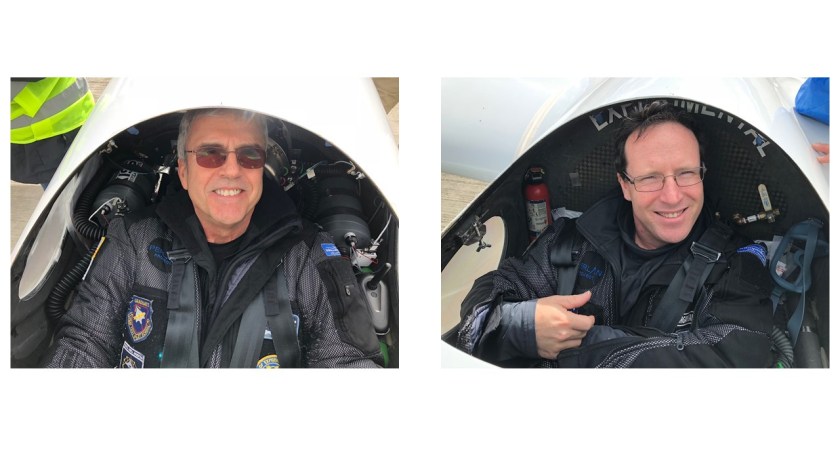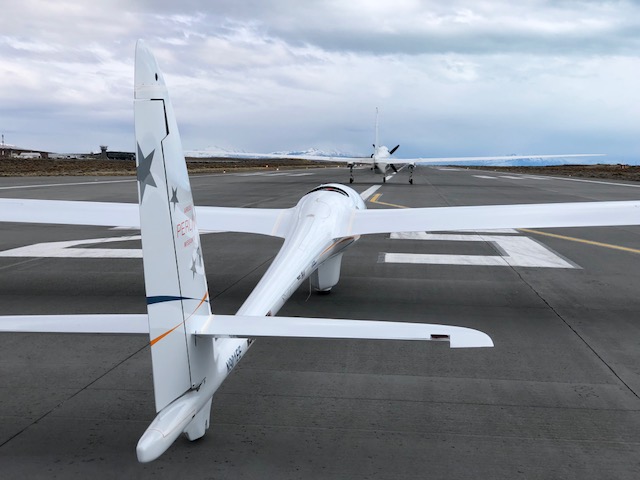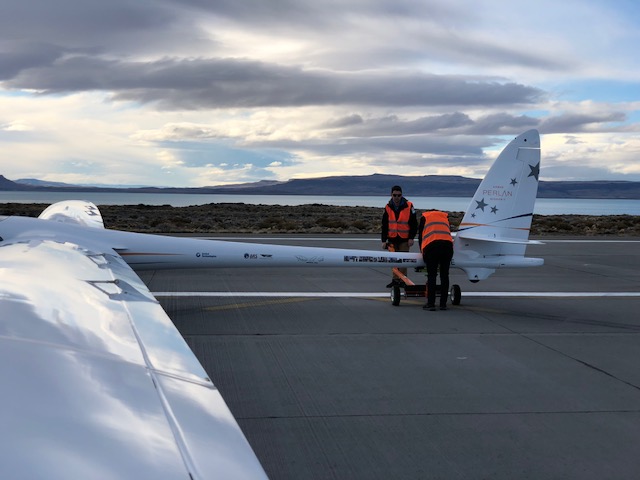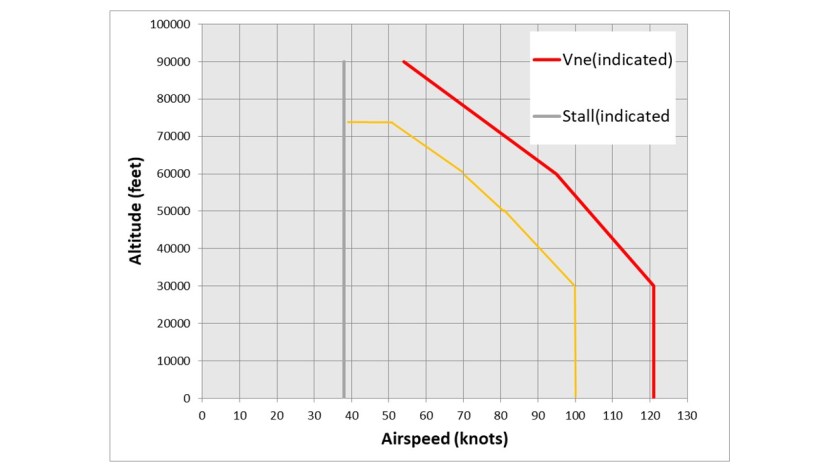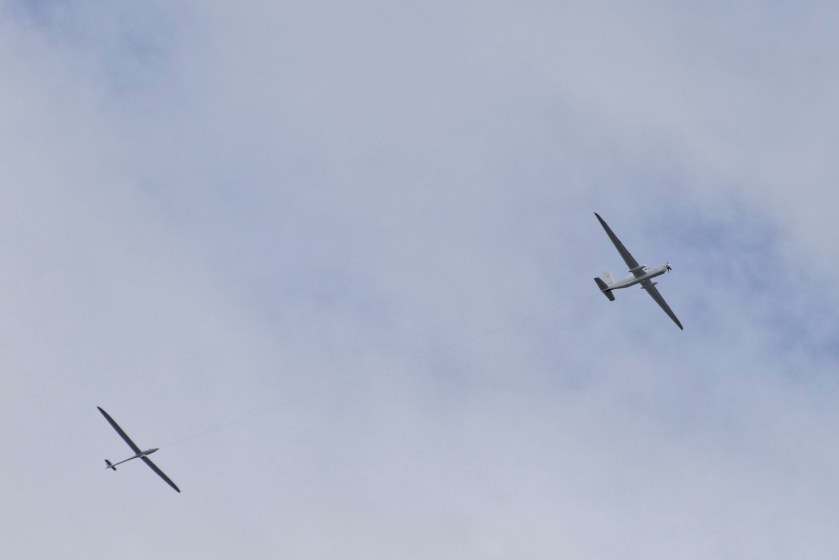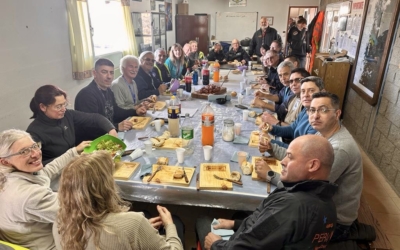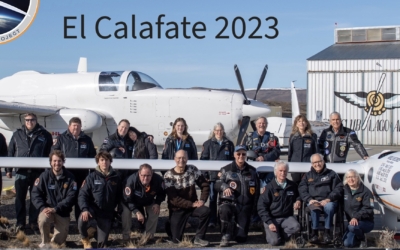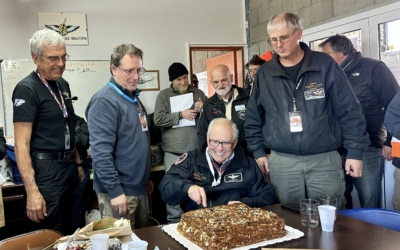For Flight #53 the objective was envelope expansion and a functional check flight of some recent upgrades performed by the Perlan Team. The goal was to fly faster, not higher, to clear more flutter excitation modeling to the right. (More details below.) Our weather man Walt Rogers was joined by Matthew Scutter, founder of SkySight, to analyze the potential clouds and any possible stratospheric wave. Lots of clouds and very little chance of lift was the verdict. Perfect for our purposes.
We delayed an hour to see if the clouds would open up a bit. The winds were very calm so Alec had to really sprint for his wing run. It takes a few seconds longer to for the Perlan 2 to gain directional authority if the wind is not blowing toward the glider when they takeoff. Finally Arne towed Jim and Morgan almost to cloud base. They had to divert to the east end of the lake to find a hole to climb through. Once on top at 25,000 feet they tracked west towards the Andes. No lift was encountered during the more than an hour long tow. Jim found a little nibble of rising air and Perlan 2 released with 1/2 knot (50 feet per minute) lift. It is a matter of pride among glider pilots that you can climb above release altitude. Jim inched upward 1,000 feet but decided it was time to set up for the high speed runs.
The flight envelope graphic has several colored lines bracketing our possible flying.The gray vertical line is our slowest speed or stall speed. That’s where the glider is flying too slow and the wings no longer make lift to sustain the glider in the air. The red line is our fastest possible speed, never to exceed. Damage to the glider could occur outside the red envelope. The yellow line encompasses all the flight tests we have successfully completed between stall speed and flying speed. We are slowly, methodically moving the yellow line upwards (higher) and to the right (faster). The gray line and red line potentially meet about 96,000 feet – which is higher than our design limit of 90,000 feet. In this no-fly zone your speed which is too slow is extremely close to the speed which is too fast. We have no plans to go there; it’s called the coffin corner for a reason.
Today there were several mid-altitude flutter excitation runs at 80, 90, and 110 kts. (90-125 mph or 150-200 kph). The higher we go the more influence true airspeed will have. At 76,000 feet 50 kts speed indicated on the instruments works out to about 250 kts true airspeed. ( 57 mph is 290 mph or 90 kph is 460 kph). So at our current high point we multiply by 5. That multiplication continues to increase as we climb ever higher. We needed data about how the airframe matches the predicted model of vibrations at high speed before we climb higher. My appologies to those who want an aeronautical textbook description of our flight envelope and true airspeed. This is a blog aimed at the genreral public who have an interest in high flying gliders!
Other successful upgrades included cold temp sealant on the 3 pieces of the wheel so the nitrogen didn’t leak out. Landing after 2.5 hours at super cold -60 C (-76 F) was a valid test. It was great to see Perlan 2 land with a round tire and actually roll to where the towout truck was waiting.
Another difficulty for this year is our struggle with cross interference among our video cameras. They are packed into the tail tip and we want to display one live feed in each cockpit. They do NOT play nice together. We are still working this issue. We also flew with my personal tablet computer. It is slightly older than Perlan’s and handles the IMU software better. We learned earlier that a Surface would freeze, especially when stored against the skin of the glider on the left (poleward) side. They made an insulated sleeve from my commercial quilted material to keep it warm. We are also collecting the inflight movement data (Inertial Measuring Unit) to compare to other instrumentation after the flight. Each flight we learn and innovate solutions for the next flight.
As the clouds started to move across the airport again it was time for Jim and Morgan to return to El Calafate. Flight #53 had successful envelope expansion and continued refinements on our solutions to challenges. We plan to do more as weather supports.
Thanks to all the readers of the Perlan blog. It has been an amazing journey and we are pleased to share it with you. 2018 continues to be a fabulous campaign for Airbus Perlan Mission II. Perlan Soars High! Jackie


